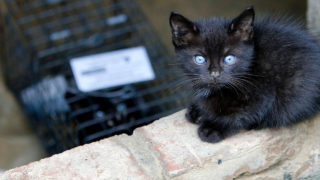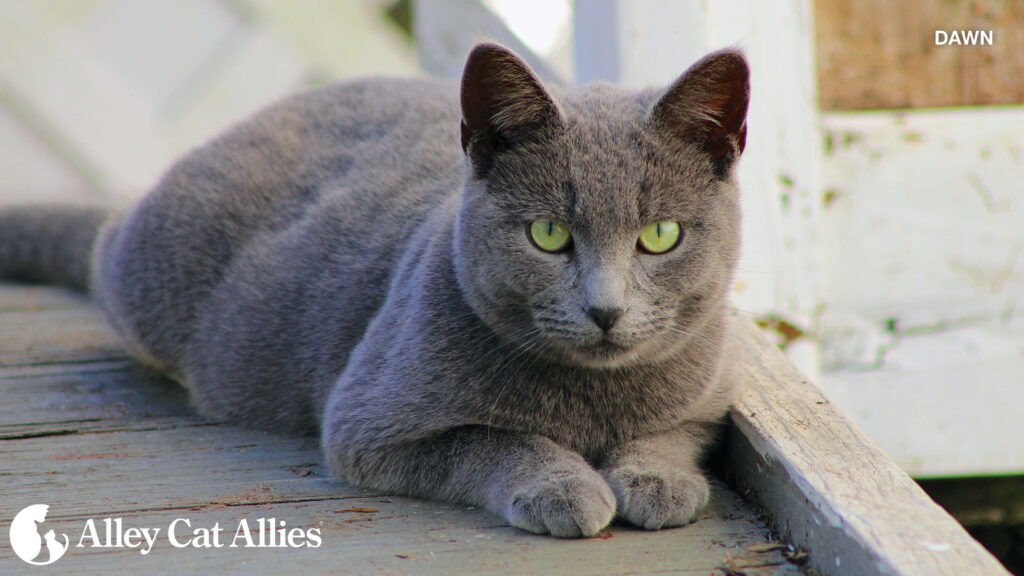UPDATE: California’s bill to ban cat declawing passed in the Assembly Business and Professions Committee! The Golden State is one step closer to ending this cruel practice. We will keep Californians updated on next steps and actions they can take to support the declaw ban.
Today, a California committee will consider a bill to ban the cruel and ineffective practice of declawing cats! Alley Cat Allies sent the following letter of testimony in support of the declaw ban, for the sake of all cats in the state. Learn more at alleycat.org/Declaw.
—
Dear Chair Berman and Honorable Members of the Committee on Business and Professions,
On behalf of Allies Cat Allies and our over 150,000 supporters in California, I submit this written testimony as a proponent of Assembly Bill 867 (“AB 867”), a bill currently under your guidance. Alley Cat Allies urges the Committee to support this bill. If enacted into law, AB 867 will prohibit the declawing of cats, a cruel and painful procedure that involves severing a cat’s toes at the knuckle.
Alley Cat Allies was founded in 1990 and is the leader of the global movement to protect and improve the lives of cats and kittens. As the leading advocacy organization for cats, we work with lawmakers, shelters, and the public toward humane, nonlethal, effective laws and policies that serve the best interests of cats and the communities in which they live. Also known as onychectomy, declawing is the surgical amputation of a cat’s toes that is virtually always performed for non-therapeutic purposes.
A common but misguided motivation for declawing is to prevent cats from scratching furniture. Many opponents of declawing bans claim that more cats will be relinquished to shelters by frustrated owners, or never find homes at all, if declaw surgery is no longer permitted. This has not proven to be the case.
After the City of Los Angeles banned declawing in 2009, the number of cats relinquished to shelters decreased by 43 percent. Similarly, a peer-reviewed study on the impact of British Columbia’s 2018 ban on declawing concluded that “legislation banning elective onychectomy does not increase the risk of feline shelter relinquishment–for destructive behavior or overall–and is unlikely to have a significant effect on shelter euthanasia or length of stay.”
The facts demonstrate that declawing itself causes the behaviors that lead people to relinquish cats. A declawed cat is more likely to exhibit increased aggression and biting to compensate for losing her protective claws, her first line of defense. Declawing also leads to chronic pain, arthritis, balance issues, and back problems. The residual pain associated with declawing can also result in a refusal to use the litter box. Biting, aggression, expensive medical issues, and litter box avoidance are among the most common reasons cats lose their homes and are brought to shelters.
Thanks to years of humane education and outreach by Alley Cat Allies and other advocates, Americans increasingly realize how detrimental declawing can be to a cat’s well-being. More have come to learn that declawing is a non-therapeutic and unnecessary surgery that is far more severe than a nail trim. We invite animals into our homes as companions and family members.
Having cats means caring for them, providing for them, and using humane solutions to solve behavioral issues. Claws are an extremely important part of a cat’s anatomy and life. We do not remove a puppy’s teeth to prevent him from chewing on shoes. Instead, understanding this is a behavioral need in response to teething, we provide the puppy with appropriate toys that allow him to carry out his instinctive desire to chew and minimize the discomfort.
Similarly, we should not surgically remove a cat’s toes and permanently alter her health and well-being when humane behavior modifications are available and affordable. Scratching posts, deterrents, regular trimming, nail caps, and plenty of toys help to redirect this natural and necessary instinct.
For all of the reasons above, declawing bans are being considered and enacted in more communities every year. New York state enacted a ban in 2019, and Maryland followed in 2022. Virginia adopted its own declaw ban in 2024, while Massachusetts officially signed a declaw ban into law in early 2025. Washington, D.C., and over a dozen major cities, including Los Angeles, San Francisco, Denver, and Pittsburgh, also prohibit this procedure. Around the world, at least 42 countries, including Switzerland, Germany, and the United Kingdom, have prohibited the declawing of cats.
The State of California has the opportunity to join some of its most forward-thinking cities, and states nationwide, in standing at the forefront of our nation’s humane movement and setting a wide-reaching example to ensure cats no longer suffer from the inhumane and painful procedure that is declawing. I encourage you and the members of the Committee on Business and Professions to support AB 867 and
keep cats’ claws on their paws.


